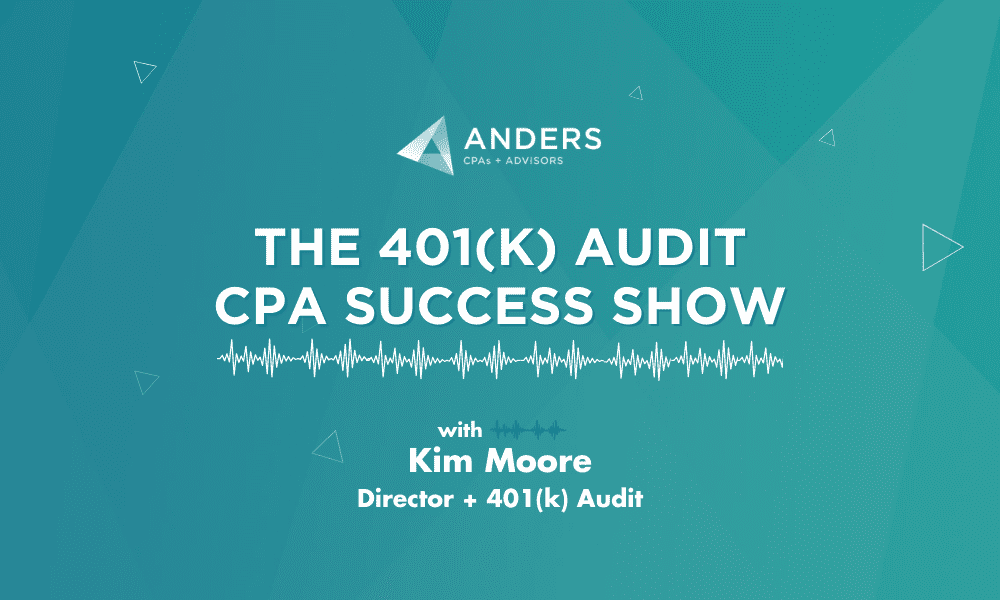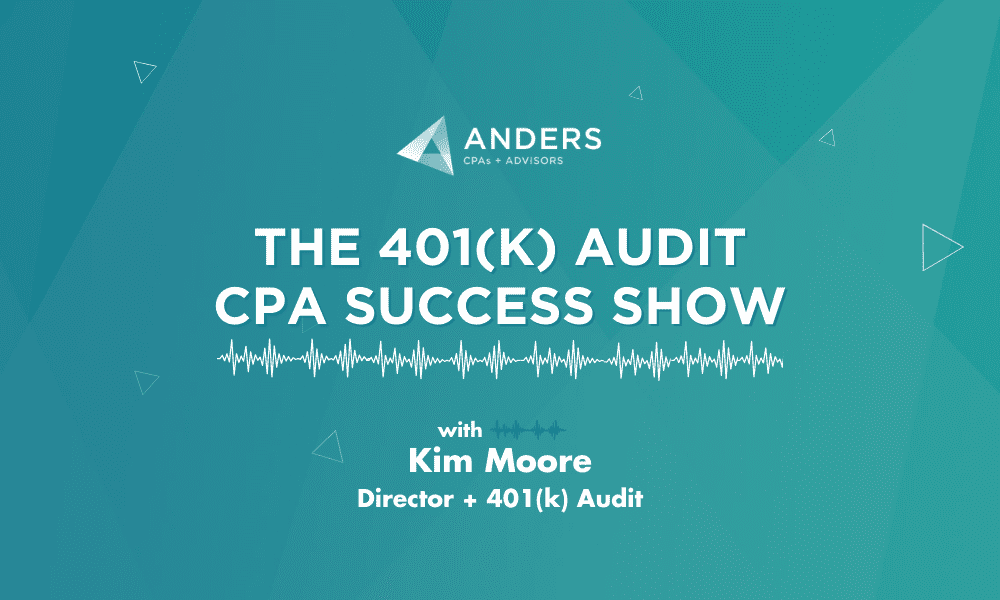Congress passed new legislation at the end of 2022 called the SECURE Act 2.0. For more information about this legislation, please refer to our previous coverage of how 401(k) plan audits will be impacted by SECURE Act 2.0 moving forward.
This was the second major piece of legislation aimed at helping employees at most companies save for retirement and allowing plans to offer options that were not available before. It also changes some options that were available previously. Some of these changes are significant. Since this legislation has many different components and they have different implementation dates, we will dive deeper into some of the changes that will require evaluation soon.
Key Takeaways:
- 401(k) catch-up contributions will rise for the 2026 calendar year, creating huge impacts for plan participants over 50 years old as well as highly compensated participants
- Any employee with an income of $145,000 or more in 2026 who is eligible to make catch-up contributions must do so as a Roth contribution under changes enacted by SECURE Act 2.0
- Roth contributions aren’t included automatically in 401(k) plans so take this time to thoroughly review your plan documents to ensure employees have options
- The catch-up contribution limit will rise for plan participants between the ages of 60 and 63 in 2025 to $10,000 or 150% of a standard contribution
What is the 2023 Catch-Up Contribution for 401(k) Plans?
Contributions to standard 401(k) plans are limited by IRS regulations. For 2023, the standard limit to contributions is $22,500. If you are above the age of 50, you are currently allowed to make an additional “catch-up” contribution to your account as you are nearing retirement age. For 2023, that catch-up amount is $7,500. This makes the total allowable contribution from an employee $30,000. These contributions can be made as pre-tax, Roth (after-tax) or a combination of both depending on what the specific plan provisions are.
These limits will be raised for the 2026 calendar year. We recommend employers, plan trustees and plan administrators review these changes to ensure their plan will be ready for upcoming changes ahead of schedule.
401(k) Contribution Catch Up for Highly Compensated Employees
This new portion of the SECURE 2.0 Act will require high-income taxpayers who want to take advantage of the catch-up allowance to make those contributions as Roth contributions. Under the law, a high-income individual is defined as anyone that has an income of at least $145,000. Folks earning less than the $145,000 threshold do not have any restrictions, i.e. they can make catch-up contributions as either Roth or pre-tax. Anyone meeting that criteria or above can still make catch-up contributions but they must do them as Roth contributions.
This change begins effective January 1, 2026, after the IRS delayed the original 2024 effective date following input from numerous Fortune 500 companies requesting a delay. The change is significant because it states that your plan must allow Roth contributions. Many plans do not have this provision. Without a change to the Plan, your employees that are high earners will be prevented from taking advantage of the catch-up contribution allowance. We recommend employers take the following actions as soon as possible to ensure they do not impede their employee’s ability to save for retirement.
- Review Your Plan Document for Roth Contributions
Ensure your plan allows Roth contributions by performing a thorough review of your company’s Plan document. If you are unsure, check with your service provider or Plan Representative. They should be able to explain the plan provisions to you. If the Plan does not currently allow Roth, talk to your service provider about the steps needed to make that change.
Your service provider should also be able to guide you and they may already have plans in place to make that change. It is a good idea to check ahead of any communications from the providers though to ensure you allow plenty of time to get the change in place before the January 2026 deadline. Some providers limit the number of changes allowed in any plan year and they may also be constrained by staffing limitations.
- Count “High-Income” Employees
Check to see how many employees will fit the “high-income” limit. Consider asking those employees if they would like to contribute to the catch-up limit. Also, look to see how many employees are currently making catch-up contributions. This may not be an area of concern for you, but it is a good idea to research ahead of time to ensure you have time to make a plan change if necessary.
- Plan to Make Changes to Your Payroll System
Discuss changes ahead of year-end that will need to be made in your payroll system for both Roth contributions in general and catch-up contributions that will be required to be Roth (for the high earners) and those that can still be made pre-tax. Good planning always helps for a better outcome, and this may involve some complicated technical changes so leaving plenty of time to get those changes implemented will prevent a scramble during the holiday period to make the change in time for a January implementation. Also, please note that the $145,000 definition of high earner will be indexed to inflation so that amount will change for future years.
Additional Changes to Catch Up Contribution Limits in 2025
Note that starting January 1, 2025, an additional change will be implemented. For those employees that are between the ages of 60 and 63 at that time, the contribution limit will change to the greater of $10,000 or 150% of the standard catch-up limit for 2024. The $10,000 amount will also be indexed to inflation. Once an employee reaches 64, the standard catch-up limit applies. It should be noted that the IRS limits for both standard contributions and the catch-up will be revised each year so the standard catch-up amounts will change (usually increasing every few years based on inflation).
The full set of IRS rules for many of the SECURE Act 2.0 changes have yet to be put in place. Once these rules are out, additional requirements may be introduced. It is important for employers to ensure they keep track of the upcoming changes so their 401(k) plan is prepared for the upcoming changes and that they can remain compliant with the new rules and also take advantage of them for their employees.
SECURE Act 2.0 has already had a significant effect on 401(k) plans in 2023. We will continue to monitor the new legislation and keep you updated on the changes it brings. For more information on how our 401(k) audit team can help, request a free consultation below or contact Kim Moore at (260) 918-8824 to discuss your unique 401(k) audit needs.


